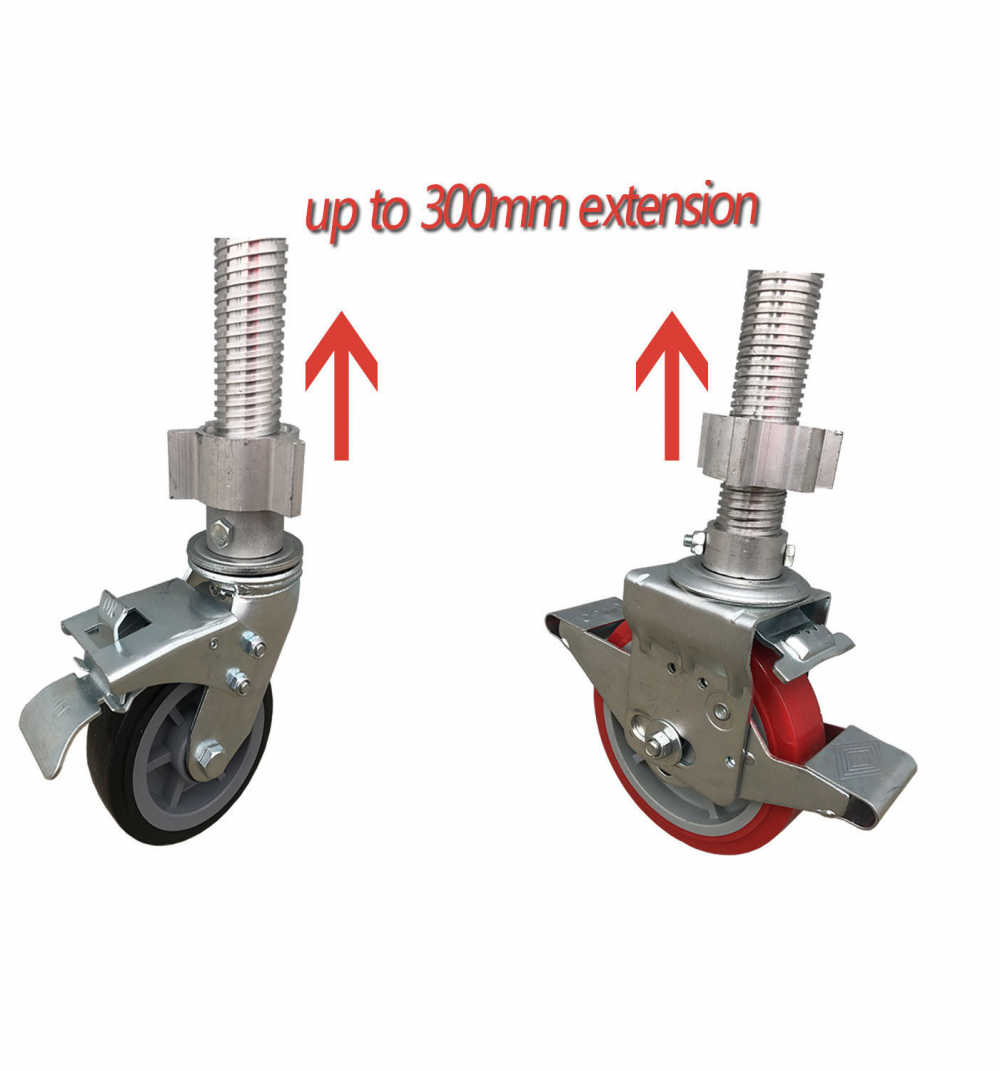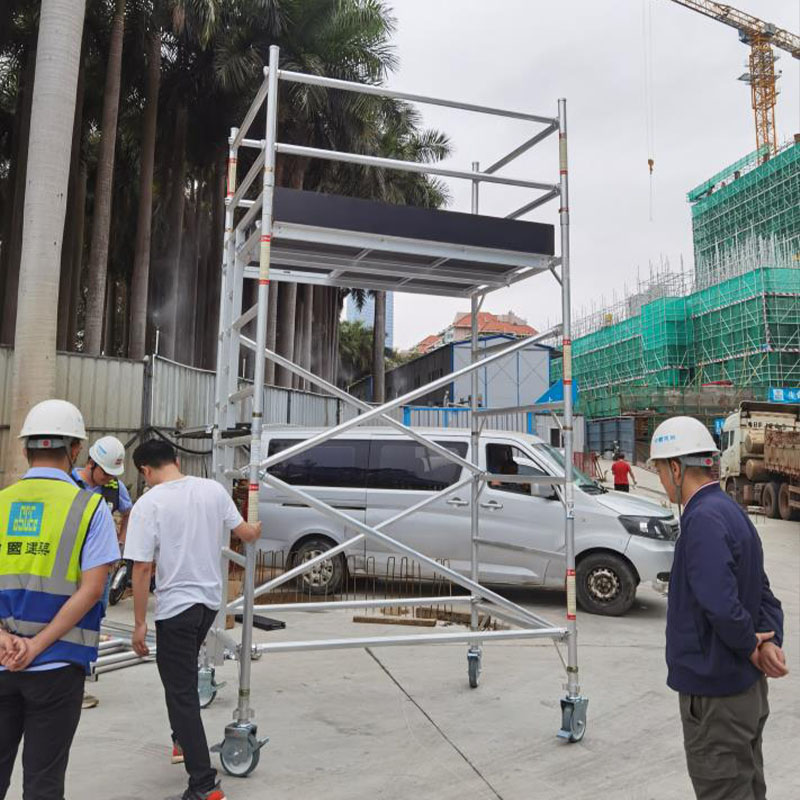Why Regular Scaffolding Examinations are Critical for Your Project
Scaffolding in High Winds: Security Measures and Tips =====================================================
In high winds, prioritize scaffolding security via wind load calculations and correct style. Guarantee secure anchoring utilizing strategies like ground screws and tie-downs. Regular evaluations and upkeep checks are essential for safety. Gear up workers with necessary PPE and secure devices and materials. Develop emergency situation action treatments, consisting of training and interaction strategies. An in-depth scaffold security plan improves readiness. Alleviate threats with routine drills and practice. Boost safety and security by understanding discharge courses and designating emergency leaders. For an extensive understanding of scaffolding safety in high winds, comply with these guidelines.
Wind Score for Scaffolding
When examining the wind ranking for scaffolding, it is important to take into consideration the structural honesty and security of the scaffolding system under different wind speeds. Scaffolding layout plays a substantial duty in determining its capacity to withstand differing wind tons. Correct wind load calculations are necessary to guarantee that the scaffolding can securely sustain employees and products in windy conditions.
The style of the scaffolding should take into consideration variables such as the height of the framework, the spacing of cross braces, and the type of products made use of. These elements contribute to the total stability of the system when exposed to wind forces. Wind tons computations involve assessing the wind pressure on the scaffolding based upon aspects like the geographical location, ordinary wind rates, and the surface area of the structure.

Proper Anchoring Methods
When establishing scaffolding in high winds, appropriate anchoring methods are crucial to guarantee security and safety and security. Safe base assistance, wind-resistant tie-downs, and routine evaluation checks are key points to ponder for reliable anchoring.
Protect Base Support
Utilizing efficient securing strategies is crucial for making certain the security and security of scaffolding in high winds. Base stability is vital in enduring the forces put in by strong winds. Appropriately securing the scaffolding to a strong structure, such as a concrete slab or sturdy ground, aids disperse the wind pressure and stop tipping or breaking down.
The support framework need to be securely secured to the base to improve wind resistance. Supports like screw-in ground anchors or weighted weights can be utilized to enhance the scaffolding's security. By guaranteeing a safe and secure base assistance through proper anchoring methods, the scaffolding becomes extra resistant against wind forces, decreasing the risk of mishaps and boosting total security on the worksite.
Wind-resistant Tie-downs
To boost the security and wind resistance of scaffolding in high winds, carrying out wind-resistant tie-downs through proper anchoring methods is vital. Tie-down effectiveness is crucial in ensuring the scaffolding can endure solid winds.
Using wind-resistant materials for tie-downs, such as durable bands or cords, can significantly boost the total stability of the structure. When anchoring the scaffolding, it is essential to secure the tie-downs to steady and immovable frameworks, such as the building itself or ground anchors.
Proper tensioning of the tie-downs is also important to avoid any type of slack that might endanger the efficiency of the anchoring system. By using wind-resistant tie-downs and complying with correct anchoring strategies, the scaffolding can better withstand high winds and make sure a more secure work environment.
Routine Examination Checks
Regular assessment checks play a critical function in assuring the correct anchoring methods of scaffolding are preserved to endure high winds effectively. Examination regularity need to follow safety criteria, which usually call for assessments before preliminary use, after any type of event that can affect stability, and at regular periods after that.
These checks assure that securing systems are safe, connections are limited, and elements are devoid of damage or deterioration. Evaluations must consist of confirming the honesty of tie-down factors, making sure appropriate stress in tie-down systems, and taking a look at the problem of support bolts or screws.
Any concerns determined during examinations must be immediately addressed to stop structural failings and make sure the safety of employees and the general public.
Assessment and Maintenance Protocols
Maintenance timetables have to be purely followed in order to assure the structural honesty of scaffolding in high wind conditions. https://mertonscaffold.co.uk Routine evaluations are essential to identify any kind of concerns quickly and make sure the safety of workers. Right here are key points to take into account:
Upkeep Schedule: Create a detailed upkeep timetable that consists of normal look for damage, rust, and architectural stability.
Assessment Checklist: Use an in-depth evaluation checklist that covers all vital elements such as joints, links, and base plates.
Safety and security Training: Make sure that employees performing assessments are properly trained in scaffold security and examination methods.
Tools Testing: Conduct routine testing of devices such as guardrails, toe boards, and tie-offs to validate their efficiency.
Personal Protective Devices (PPE)
Personal Protective Tools (PPE) is vital for making sure the safety of employees on scaffolding, especially in high winds. This includes tools such as construction hats, gloves, harness, and non-slip footwear.
Proper upkeep and regular examinations of PPE are important to ensure their performance in guarding employees at elevated heights.
Crucial PPE for Employees
Workers taking part in scaffolding tasks in high winds need to be geared up with essential Individual Protective Equipment (PPE) to ensure their security on duty website. The following PPE is important for workers in such problems:
- Hard hats to protect the head from dropping things
- Safety harnesses to prevent drops from heights
- Security safety glasses to shield the eyes from debris and wind
- High-visibility vests to guarantee visibility in low-light and high-wind situations
Proper maintenance of PPE is necessary to guarantee its effectiveness, and tool security procedures must remain in location to stop objects from falling off scaffolding, jeopardizing employees listed below. By prioritizing the use of ideal PPE, workers can mitigate risks and job securely in challenging settings.
Appropriate PPE Upkeep
To ensure the efficiency of safety equipment, consistent examination and maintenance of the important tools utilized by individuals in high-wind scaffolding settings is crucial. Routine PPE evaluation is essential to make sure that the equipment stays in good problem and supplies the necessary defense.
Security guidelines advise looking for any kind of indicators of damages, such as splits, cracks, or damaged straps, and immediately replacing any type of endangered devices. Additionally, correct storage space of PPE when not being used is basic to prevent destruction and preserve its effectiveness.
Routine cleansing and upkeep complying with manufacturer directions can help lengthen the lifespan of the gear and make sure that it works as meant in high-wind problems, safeguarding workers from possible hazards.
Securement of Devices and Materials
Making sure that tools and products are properly secured is crucial when working with scaffolding in high winds to stop crashes and preserve a secure workplace. Proper tool organization and product storage space practices play a pivotal duty in preventing things from becoming harmful projectiles. In addition, routine equipment upkeep is important to assure tools remain in excellent functioning condition and less most likely to malfunction in tough weather conditions. Security training is likewise vital for all employees involved in scaffolding tasks, as it equips them with the expertise and skills essential to handle devices and products safely also in negative climate.
- Secure Devices: Usage tool belts or tethering systems to stop devices from falling.
- Stable Product Storage Space: Pile materials firmly to prevent them from being surprised.
- Regular Tools Checks: Evaluate devices consistently to determine and address any kind of problems promptly.
- Comprehensive Safety Training: Make sure all employees are trained in appropriate device handling and storage space procedures to minimize dangers.

Emergency Situation Action Procedures
In the event of unexpected emergency situations while dealing with scaffolding in high winds, swift and well-coordinated action treatments are vital to assure the security and wellness of all individuals involved. Performing regular emergency drills can assist acquaint workers with emptying procedures and make certain a quick and reliable feedback in instance of emergencies. It is vital for all workers to be fluent in the discharge paths and setting up points to assist in a smooth and orderly evacuation procedure. Additionally, assigning particular individuals to take fee during emergency situations and connect guidelines clearly to all workers can help protect against panic and confusion.
Emergency feedback procedures must be plainly outlined in the scaffolding safety and security strategy, describing detailed guidelines on exactly how to respond to different types of emergency situations, such as high winds, equipment failing, or clinical occurrences. Frequently evaluating and exercising these procedures can aid make certain that all employees are prepared to react effectively in high-stress situations. By prioritizing emergency readiness and action training, employees can minimize dangers and improve general safety and security when working on scaffolding in high winds.
Often Asked Questions
Can Scaffolding Be Used in Extreme Weather Condition Issues Such as Hurricanes or Tornadoes?
Scaffolding ought to not be used in severe climate condition like typhoons or tornadoes due to safety and security risks. Emergency protocols have to be in place, and using wind-resistant materials can minimize possible risks related to strong winds.
Are There Any Type Of Specific Weight Purviews for Scaffolding in High Wind Areas?
Weight restrictions and wind security are crucial factors in making certain the safety of scaffolding in high wind areas. These restrictions differ based upon the scaffolding type and style. Complying with supplier standards and market standards is crucial.
Just How Commonly Should Scaffolding Be Checked for Wind Damages?
Regular wind damage control are vital to ensure the security and stability of scaffolding frameworks. Inspections need to be performed at least regular or after any substantial climate event to recognize and attend to possible hazards immediately.
What Type of Personal Protective Devices (Ppe) Is Recommended for Working With Scaffolding in High Winds?
When working with scaffolding in high winds, it is necessary to focus on security by putting on ideal individual safety devices (PPE) such as headgears, safety belt, and non-slip footwear. Applying these preventative measures can help protect against crashes and guarantee device safety.
Just how Should Tools and Materials Be Secured on Scaffolding to avoid Them From Being Blown Away in Strong Winds?
To avoid tools and products from being blown away in strong winds on scaffolding, protect them utilizing correct tool company methods and wind-resistant attachment techniques. Carrying out safety measures such as tethering tools and weighting down materials can reduce dangers.
Conclusion
To sum up, making sure the safety of scaffolding in high winds requires adherence to wind rating guidelines, appropriate anchoring strategies, normal assessment, and upkeep.
It likewise entails making use of individual safety tools, securement of tools and materials, and knowledge of emergency situation action procedures. By following these preventative measures and tips, employees can decrease the threat of crashes and injuries while working on scaffolding in gusty problems.